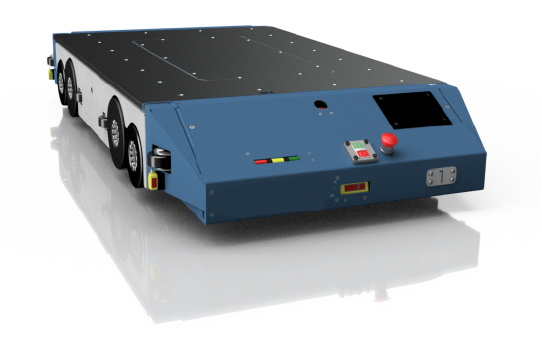
Fully Automated
Pallet Storage System
NOW-Gen TECHNOLOGY
Flexible – Scalable – 3 – Dimensional

RAFTTM or Right Angle Fast TransferTM is a fully automated, high-density pallet storage to meet today’s demanding warehousing and distribution needs.
What do you need to know about RAFT AS/RS?
It’s scalable for any high-throughput operation and it’s flexible, allowing you to automatically react to inventory and order processing changes. But we’re only getting started!
Choose the pallet intake and distribution configuration that works for you. RAFT AS/RS shuttles pallets via put wall or conveyor intake and swiftly navigates inventory storage and order fulfillment through the integration of cutting-edge automation and SRSI’s proprietary SwiftCurrent WES.
RAFT AS/RS is a 3-dimensional “lift and run” system. Pallets are lifted to the designated storage level, transferred both cross-lane and down-lane to the next available pallet position. Maximum storage density and automated pallet accessibility are as easy as that!
The Result of 20+ Years’ Experience in
ASRS Shuttle Technology… RAFT!
Advantages
- Fully Automated
- Maximize Capacity
- Optimize material flow & order throughput
- Complete visibility of completed vs. in-process orders
- Reduction in labor & overhead costs
- Flexible & scalable – option to fully integrate with AGVs

Discover fully automated, high-density pallet storage with the must-have flexibility and scalability you need for today’s demanding, high-throughput operations. Choose the intake and distribution configuration that works for you. RAFT AS/RS shuttles pallets via putwall or conveyor intake and swiftly navigates inventory storage and order fulfillment through the integration of cutting-edge automation and SRSI’s proprietary SwiftCurrent WES.
HOW IT WORKS
RAFT AS/RS pallet shuttle is easily configured to meet the operational needs of your warehousing and distribution center. For pallet storage and retrieval, choose between traditional pallet intake via conveyor or a putwall configuration. RAFT is programmed to be fully integrated into your operation and can be paired with an AGV fleet if desired.
SwiftCurrent WES directs the operation of your RAFT shuttle system and automatically adjusts to changes in inventory/stock and order processing. The pallet storage and retrieval process follows these steps depending upon your intake design.
Traditional Conveyor Intake
Traditional Conveyor Intake
- Pallets arrive/depart via conveyor to the vertical transfer unit (VTU).
- System selects the optimal pallet storage location.
- Vertical transfer units (VTU) utilized to move pallets between levels.
- RAFT pallet shuttles deliver & take-away pallets from storage positions.
Put Wall Intake
Put Wall Intake
- Pallets arrive/depart via put wall sections (increased capacity).
- System selects the optimal pallet storage location.
- Vertical transfer units (VTU) utilized to move pallets between levels.
- RAFT pallet shuttles deliver & take-away pallets from storage positions.
Frequently Asked Questions (FAQ)
What is the speed of the vertical lift (VTU)?
The Vertical Transfer Unit (VTU) speed depends on the application’s throughput requirements. 100-180 FPM is a typical range. Higher speeds are available if required.
What is the speed of the RAFT robot?
Nominal speed of RAFT is 2 meters per second. Top travel speeds can vary for loaded and unloaded, as well as load specific travel speeds and acceleration/deceleration curves.
Ex. Liquids typically travel at lower speeds and slower curves due to the physical properties of the load. The unit can be capable of higher speeds if required, however, a typical layout would not usually allow for higher speeds to result in increased throughput. The number of 90-degree transfers and the distance between them would not typically allow any substantial benefit for running faster unless the system footprint is large enough that empty straight line travel distance is long enough for a higher speed to be truly beneficial.
What is the charge time of the RAFT robot?
The RAFT robot charges in 30 minutes with 480 volt 3-phase power. 1-hour and 2-hour charge cycles are available if the house power is limited in amperage or voltage.
How long can the RAFT robot operate before it must re-charge?
Typically, the RAFT robot runs 4-6 hours between charges based on a variety of factors including empty vs loaded travel time, load weight, operating temperature and idle time.
Do the RAFT robots “know” when their batteries get down to about 15-20% and will they automatically return to a charging position at that point?
The on-board battery management system provides feedback to SwiftCurrent, our WCS system, on battery status. Once the battery reaches pre-set percentage, the RAFT robot automatically completes its current task and is routed to the nearest available charging station. The percentage is variable and can be changed based on system performance.
BEGIN IMPROVING YOUR OPERATION EFFICIENCY AND COST
Contact us today to see if RAFT is a good fit for your business.
SCHEDULE A CALL WITH US TODAYBLOG
LEARN
From basic rack to conveyor, sortation, and automation, SRSI takes care of you and your operations. Explore our blogs and expertise here.
Learn More
STORAGE SOLUTIONS
INDUSTRIES WE SERVE
Discover storage solutions of all sizes and complexity.
Learn More
ABOUT US
ABOUT US
We speak operations at SRSI. Our dedicated turnkey systems integrators, designers, project managers, and software experts deliver more than customer satisfaction.
Learn More
 Skip to main content
Skip to main content
